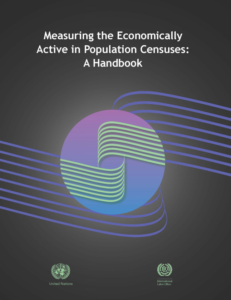Population and housing censuses are a vital part of national statistical systems. They provide essential information on the structure, characteristics and housing conditions of a country’s population, and serve as a backbone to national household survey programmes and other statistical activities necessary to support informed policymaking.
Capturing essential economic characteristics of the population in the census is recommended as a core topic for the 2020 Round of Population and Housing Censuses. To support these efforts, the ILO Department of Statistics collaborates with the UN Statistics Division to issue updated international census recommendations aligned with the latest ICLS standards, and develops practical tools and training to support census planners in adapting these recommendations to the national context.
Publications
Note: Many publications are available only in English. If available in other languages, a new page will open displaying the options on the right.

ILO Model question on volunteer work for Population and Housing Censuses
This model question is suitable for inclusion in a census form to capture participation in volunteer work, aligned with the latest standards adopted by the ICLS.

ILO model questions on economic characteristics for population censuses
This resource includes model question sequences suitable for inclusion in a census form to capture the UN recommended core and additional topics on economic activity, aligned with the latest standards adopted by the ICLS.

Quick Guide on Measuring Economic Characteristics in the Population Census
Capturing essential economic characteristics of the population in the census is recommended as a core topic for the 2020 Round of Population and Housing Censuses. To support these efforts, this guide updates international census recommendations aligned with the latest ICLS standards, and develops practical tools and training to support census planners in adapting these recommendations to the national context.

Measuring the Economically Active in Population Censuses: A Handbook
The Handbook (2010) provides guidance on the measurement of economic characteristics in population censuses, based on relevant experiences of countries, with a particular focus on the questions used and the requirements for processing of responses. The Handbook is intended to provide census planners with a variety of approaches to assess the questions and methods of collecting economic characteristics used in their national census, as they evaluate the performance in the past decade and plan for the 2010 round of censuses (2005-2014).

Sources and Methods Volume 5: Population censuses (2004) – Total and economically active population, employment and unemployment
This volume is an updated version of the second edition issued in 1996 which presented national methodological descriptions of population censuses carried out during the period 1989-94 in 115 countries, areas and territories. The first edition issued in 1990 covered the period 1945-89.

